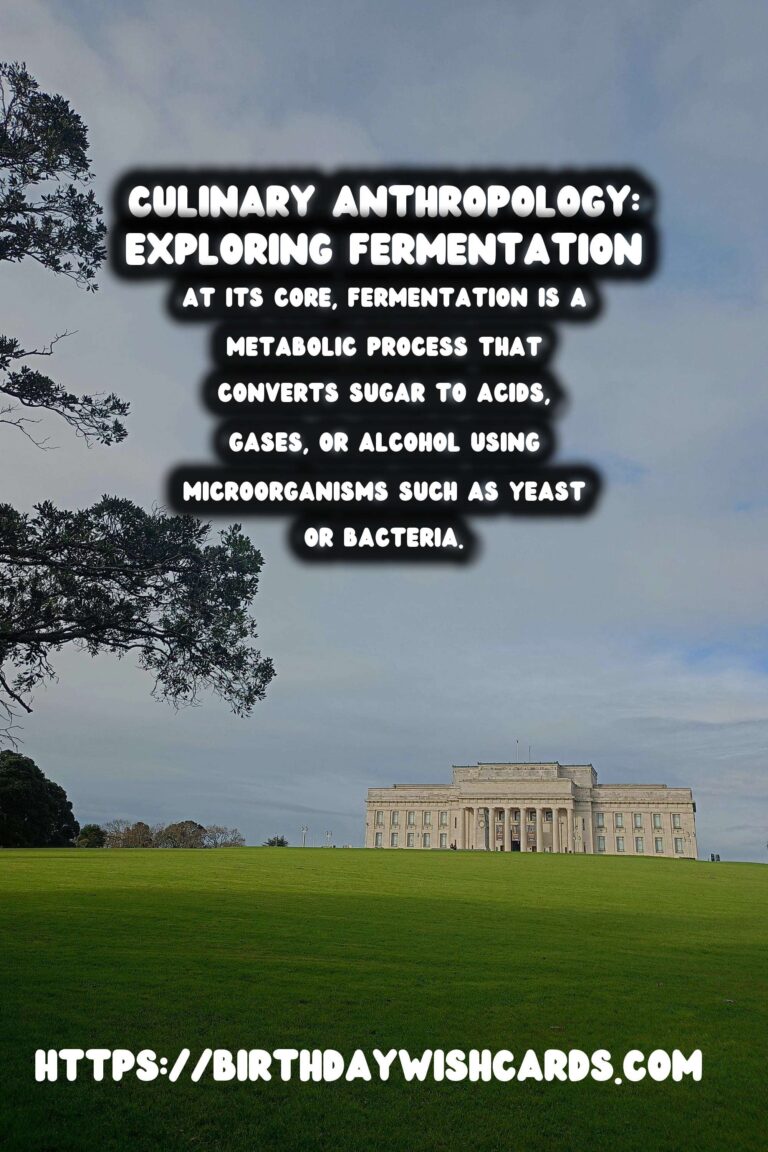
Fermentation is a fascinating process that has been a cornerstone of culinary practices around the world for millennia.
From the bubbling cauldrons of ancient brewers to the contemporary fermenters in modern kitchens, the journey of fermentation is as rich and complex as the flavors it produces.
The Origins of Fermentation
Fermentation likely began as a serendipitous accident. When people first started gathering fruits and grains, they inadvertently invited the wild yeast and bacteria that initiated the fermentation process. This ancient art was not only crucial for preserving food in times of plenty but also for maintaining nutritional value.
The Role of Fermentation in Ancient Cultures
Many ancient civilizations, such as the Egyptians, Chinese, and Romans, harnessed the power of fermentation. Each of these cultures developed unique fermented foods and beverages, ranging from fermented fish sauces in Southeast Asia to the famous Egyptian beer.
The Egyptians, for example, perfected the art of brewing beer, which was a staple in their diet, while kimchi, a staple in Korean diets today, has been traced back over two thousand years.
Fermentation’s Journey Through Time
As civilizations expanded, so did the knowledge and techniques of fermentation. In medieval Europe, monasteries became centers of brewing expertise, leading to the diverse selection of beers and cheeses we enjoy today.
Different regions began trading fermented products, introducing them to new cultures and incorporating them into local cuisines, thus spreading the art of fermentation across the globe.
The Science Behind Fermentation
At its core, fermentation is a metabolic process that converts sugar to acids, gases, or alcohol using microorganisms such as yeast or bacteria. This transformation alters the texture, taste, and nutritional profile of foods, often enhancing their flavor and digestibility.
Lactic acid fermentation, used in making sauerkraut and yogurt, produces a tangy flavor while preserving nutrients and promoting gut health.
Modern Fermentation: A Culinary Revival
Today, there is a renewed interest in fermentation, driven by health trends and a desire for authentic, artisanal flavors. Chefs and home cooks alike experiment with fermenting, using both traditional methods and innovative techniques to create exciting new dishes.
This resurgence is seen in the popularity of kombucha, tempeh, and other fermented products that emphasize sustainability, nutrition, and flavor.
The Cultural Significance of Fermentation
Fermentation is more than just a method of food preservation; it is a cultural phenomenon that reflects a society’s history, beliefs, and environment. It symbolizes collaboration between humans and nature and fosters a sense of community.
Fermentation practices often involve generational knowledge, and recipes passed down through families and communities, strengthening cultural ties and culinary heritage.
The Future of Fermented Foods
As we look to the future, the role of fermentation in sustainable food systems and nutrition becomes increasingly important. Research into fermentation technology continues to open new possibilities, from biofuels to probiotic therapy.
In our ever-evolving culinary landscape, fermentation remains a testament to human ingenuity and the transformative power of time and microbes.
In conclusion, the history of fermentation is not just about food; it’s about culture, sustainability, and the creative potential of working with nature to enhance our culinary experiences.
Fermentation is a fascinating process that has been a cornerstone of culinary practices around the world for millennia. At its core, fermentation is a metabolic process that converts sugar to acids, gases, or alcohol using microorganisms such as yeast or bacteria.
#Fermentation #CulinaryAnthropology

